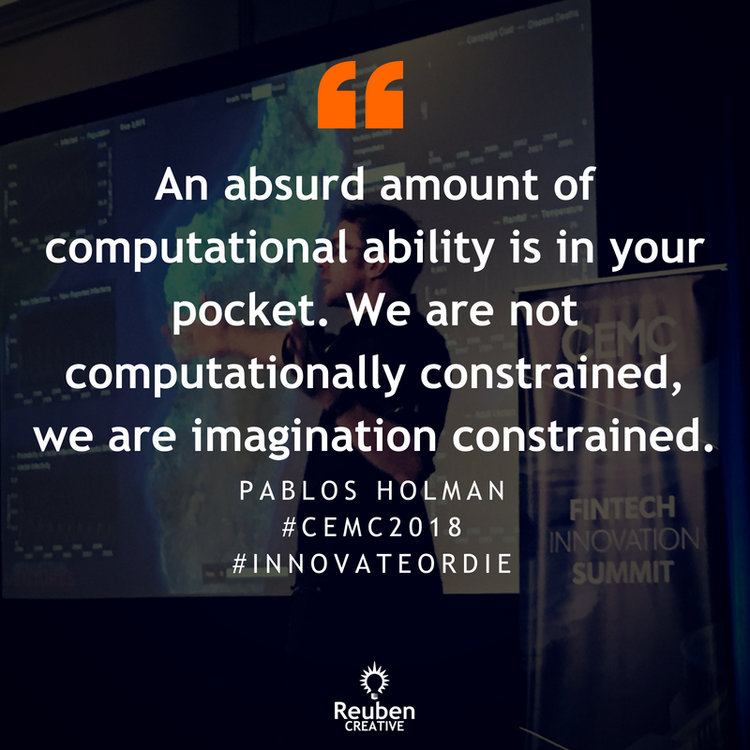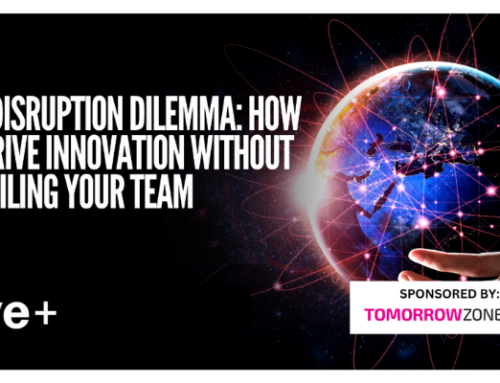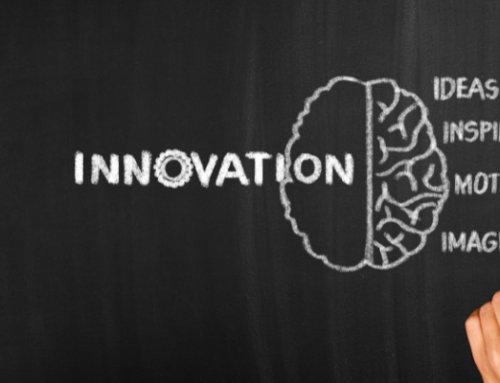
I recently attended the Commercial Equipment Marketplace Council (CEMC) Innovation Summit, held in Laguna Beach, CA. Packed with information, insights, and ideas, here are my takeaways from the event.
The summit began with a challenge to the attendees, from Charles Anderson, CEO of Currency Capital; “go big, think big, dream big and be inspired.” This is not something I typically hear in an industry where big dreams and wild ideas often met with a mindset that responds “we can’t… because.” However, at this event, wild ideas are welcome. Attendees at the summit were challenged to think about bridging the divide between ideas and meaningful action.
During the event, we heard many of the buzzwords we’ve come to expect at these types of conferences: Blockchain, AI, Machine Learning, Big Data, Innovation. However, they were presented here with a thought-provoking twist. That twist was about mindset, new perspectives, and business model innovation. With all of these remarkable technological opportunities happening in the world, what should our perspective be? How can an organization inspire a mindset shift from an inside-out focus on products and services, to an outside-in focus on customer desired outcomes and solutions?
Rather than focusing strictly on finance or technology, this conference had an interesting theme running throughout it: mastering your mindset. The way in which you think about today, or about innovation, or the future – matters. Dr. Michael Gervais, High-Performance Psychologist, discussed the importance of mindset with the attendees- even detailing the benefits it has brought Microsoft as an organization. After Microsoft’s CEO contacted him, Dr. Gervais worked to develop an organizational mindset across the company; helping employees better handle stress and uncertainty.
Mindset for high performance and innovation
In his segment, Dr. Gervais underscored the significance of mindset on high performance. He explained that top performers master their craft by training their minds with the same level of discipline they use to train their bodies. As part of this training, Dr. Gervais introduced us to the term “flow” – a state-of-mind where you feel as though you are at the top of your game; you lose track of time in the full immersion of an activity. To find your flow, you must first be focused. Focus allows us to come up with innovations and business models. Imagine if you could intentionally train your mind to get into the flow state more often – what would be the ROI on that? Are you focusing on enabling yourself to get into that flow state more often? These are important questions to ask in an age of distraction where attention is the new currency and peace of mind is new wealth.
Jonathan Andrew, CEO & Global Head Commercial Finance for Siemens Financial Services, shared his thoughts on how to get an entire organization focused on customer experience and innovation. Specifically, organizational mindset on customer focus is critical for innovation and to avoid becoming obsolete. Technology is advancing rapidly, and customer expectations are continually changing. Are you close enough to your customers to understand how forces of change impact them?
Although true innovation requires business model innovation, established businesses are reluctant to let go of what they do today. To obtain radical change, you must let go of that which is no longer relevant. You need to shift focus from delivering products and services- to providing solutions and outcomes. Radical innovation requires a willingness to challenge even your most basic assumptions of the core business.
This action of challenging assumptions was highlighted in a speech by Pablos Holman, Futurist/Inventor/Security Expert/Hacker . He began his presentation of “Invention and the Hacker Mindset” by stating “we implement science fiction.” Through examples of original inventions, he illustrated how hacker brains ask different questions in the process of invention. Instead of asking “what does this do?” they ask “what can I make this do”? Indeed, this is an interesting mindset with applications to the equipment finance business. We know we need to innovate to remain relevant. So where is the real innovation?
Technology Advances and Equipment Finance
Throughout the event, there was discussion and debate about possibilities for AI and Machine learning, blockchain, Internet of Things (IoT), and more importantly, the possibilities at the convergence of these advances. VP Big Data Analytics for IBM and Future Trends Expert, Paul Zikopolous, discussed advances in data science. He explained that disruptive companies (such as Airbnb and Uber) are built on data science coupled with hyper-personalization at scale. Eighty percent of the world’s data cannot be googled; tapping into that data is the basis of competitive advantage.
What could the equipment financing customer experience look like if it were hyper-personalized to each individual customer? While many equipment finance companies do custom deals and consider that to be hyper-personalization – can they do it at scale? To successfully do so, we must re-think the role of technology and data in future equipment finance business models. If we reimagine professional services (repeatable processes where the outcome is known), through an AI lens, we can have humans train the machine models. By imagining the state-of-the-art possibilities, AI can augment human capabilities, so that we can focus on those things that require the human touch.
Additionally, we learned about advances in underwriting applications for machine learning, where the auto decisioning are transparent rather than mysterious. This technology is currently applied to consumer lending scenarios but is moving into small business. With consideration of new data sources for decisions (telco data, e-commerce data, search data, and social), one of the challenges with new decisioning data sources is the fine line between convenience and creepiness.
One challenge many finance companies face is that much of their data is in manual processes and paper. How do you begin to digitize when your information is in file cabinets, clipboards, and whiteboards? According to Pablos Holman, machine vision is being applied to create new innovations. Could new machine learning models be used to tap into that data and lead to new innovative ideas?
Like AI and machine vision, Blockchain [insert link to the leasing foundation video] technology was another hot topic. Bart Cant, IBM Blockchain Practice, observed that he is seeing the conversation moving from technology to business leaders. The business world is beginning to see real applications built on blockchain. AI, IoT, and Blockchain are following similar hype-cycles. However, there is both excitement and confusion about the possible applications in business. Of 70 use cases examined by Cant’s team at IBM, they identified five that made sense to implement- although this had little to do with the technology itself, and was driven by market structures and readiness.
Equipment finance is a business network. To understand where blockchain fits in, we need to look for opportunities to optimize processes, improve quality, transparency, create new value propositions, new business models, or even micro-transactions. When asked if they knew of any practical examples of blockchain for our industry, the panel of five experts couldn’t think of one. However, we can take inspiration from what is happening in other industries – such as the consumer mortgage end-to-end process, and the work going on in the insurance industry. Interoperability and integration with existing platforms will be a key consideration for future blockchain initiatives in equipment finance.
New Business Model Considerations
The discussion of new business models was light in comparison to the rest of the content; however, one session did include analysis of the sharing economy and two unusual business model cases from outside of the equipment finance industry. The interesting thing about both models is that the innovation was driven by understanding customer challenges and finding unique ways to help deliver a desired outcome for customers.
One example of this, Cohealo, is an innovative business model that serves the healthcare industry and optimizes equipment utilization for medical systems through analytics and equipment sharing. Through creative scheduling, tracking, and logistics, they move the equipment to where it can be used, to avoid it sitting in storage; thus, helping customers to realize the benefit of their equipment investment.
The other example, Kwipped, is a marketplace discovery platform for the industrial equipment space. Kwipped is solving the problem of inefficient sourcing of equipment, by connecting customers looking for specific outcomes, via algorithms to match the customer to the right suppliers. Beyond equipment acquisition, this discovery platform delivers to the customer consultative sourcing, delivery, setup, training, and tech support.
During Pablos Holman’s presentation, he spoke about the garment industry and showed a sewing machine, which most often operated by a human, and the industry chases low-cost labor around the world. When the sewing machine becomes automated, how will that industry be disrupted? In the business model session, the realization was that underutilized assets could be the sewing machine of this industry. Compared to consumers, when it comes to equipment sharing, the outcome for B2B customers is more consequential. It is about more than underutilized assets and demand. It’s about trust, vetted suppliers, domain expertise, and ability to deliver the desired outcome for the customer.
Another interesting discussion about changes happening in medical equipment sales relates to the impact of digital on the sales process itself. Are B2B sales happening online? Even though it is a consultative sale, a consultative deal can happen online, and the speaker shared that online collaboration is becoming more readily adopted and OEMs are already thinking of a rep-less sales model.
The business models are impressive. Although they have no assets, they facilitate access to the right equipment at the right time for each use case. Could this translate to how health systems think about ownership of equipment, and the possibility of a co-op/per-use model? What are the considerations for the complexity of equipment management? Is an ownerless model possible, where everyone with a stake in the equipment participates via blockchain?
New Ideas for the Future
In my opinion, events such as these are about sharing ideas and discovering new questions to ask, which spark new ideas for the future. I walked away with many new questions. If underutilized assets are the “sewing machine” for this industry, how might we develop new business models to exploit that situation? Where do we need less status quo thinking and more hacking across the equipment finance lifecycle? How might I improve my focus and train my mind to get into the flow state more often? With the possibilities of connected assets, aggregation of data, and new insights, do we understand how different work may be in future?
In themselves, each of the individual technologies explored during this event could lead to new possibilities. However, it is at the convergence of these technologies that we may see the most exciting innovations for our industry. It was refreshing to gather with people from diverse perspectives, exploring these topics and being challenged to think big and dream big. I left with new clarity on how to bridge the divide between ideas and meaningful action. As my favorite quote from Pablos Holman stated, “An absurd amount of computational ability is in your pocket. We are not computationally constrained; we are imagination constrained.”





